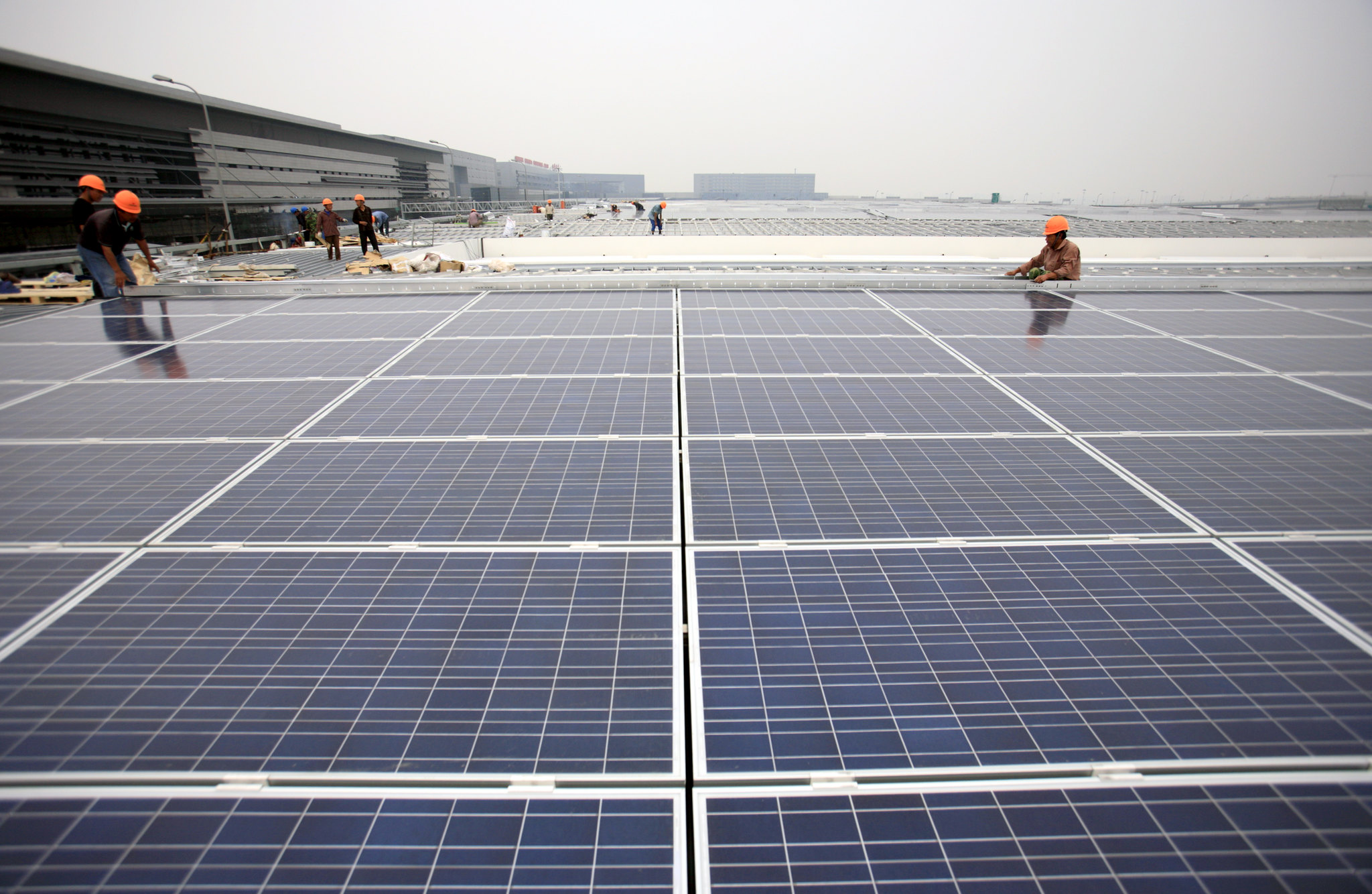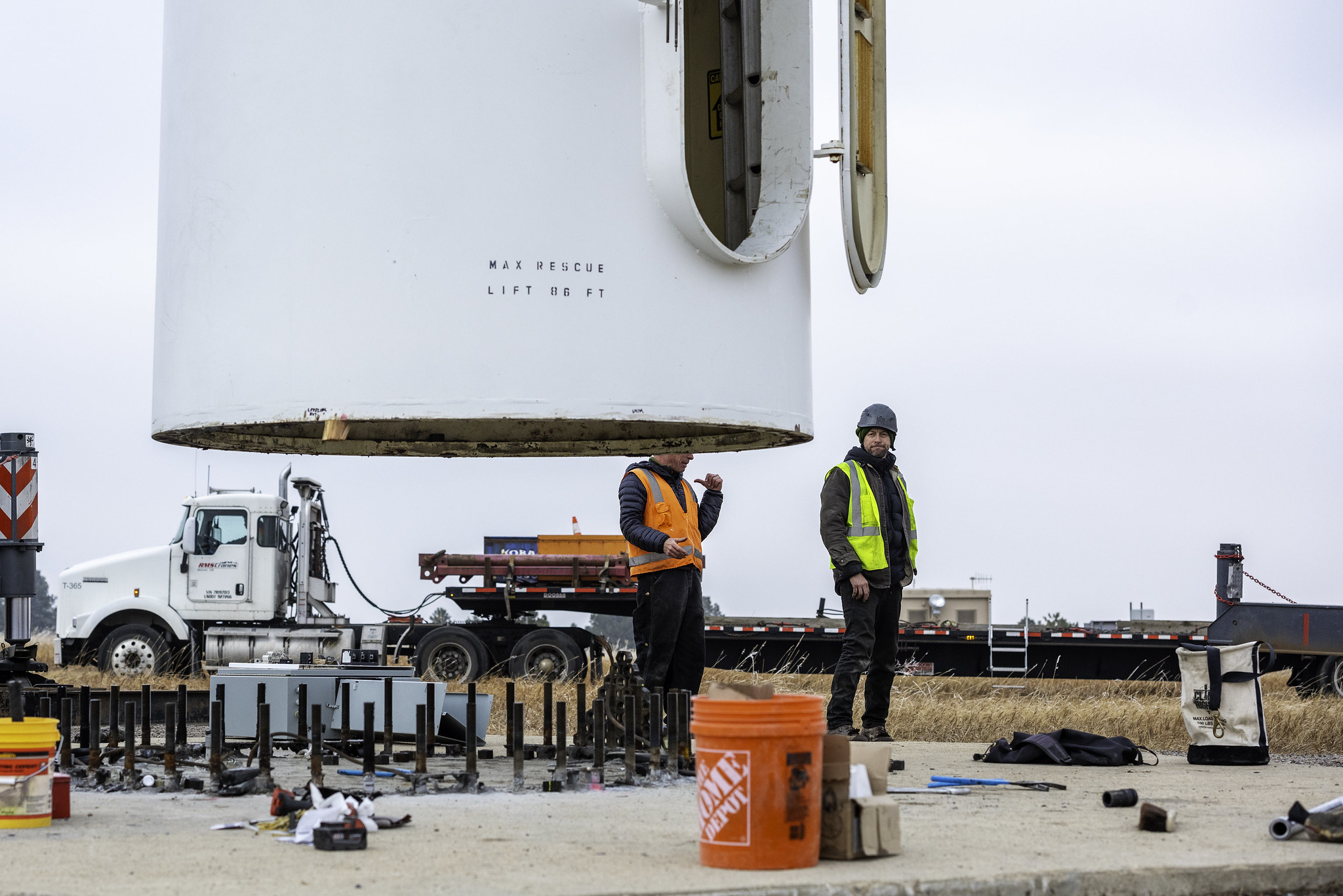The shift to renewable energy is certainly good news for the planet.
It is also a booming source of job opportunities!
The EU’s ambitious target of supplying 45% of energy from renewables by 2030, together with The US Inflation Reduction Act and progressive targets in China, are opening up a new era of job creation, with solar photovoltaics (PV), batteries and wind power leading the way.
The Renewable Energy Employment Surge
The renewable energy transition is opening up a world of economic opportunity. The number of direct jobs in the global electricity sector is expected to grow from around 21 million in 2015 to nearly 35 million in 2050, while the number of direct jobs in all renewable energy sectors is expected to grow from 13.7 million in 2022 to 42 million in 2050 (Global renewables outlook, 2020).
In addition, investment in energy efficiency measures is expected to create 21 million additional jobs, while system flexibility is expected to create a further 15 million jobs over the same period.

Figure 1 - Evolution of global renewable energy employment by technology, 2012-2022 (Source: IRENA and ILO, 2023)
The remarkable growth in renewable energy employment is driven by a number of factors:
Climate change mitigation efforts
The global consensus on the urgent need to address climate change is the most urgent driver. Nations strive to reduce greenhouse gas emissions, and shift towards renewable energy sources such as wind, solar, and hydro. Renewables represent a realistically scalable solution to the climate crisis.
Technological Advances
The last decade has seen breakthrough innovations in renewable energy technologies, making them more efficient, more reliable, and cheaper to produce and install. The levelized cost of energy (LCOE) from solar PV dropped from $0.45/kWh in 2010 to $0.05/kWh in 2022. The price of energy from offshore wind dropped from $0.20/kWh in 2010 to $0.08/kWh. This lowered the barriers to entry for renewable energy adoption and have spurred job creation across various sectors, from research and development to manufacturing and installation.
Policy and Regulatory Support
Initiatives such as feed-in tariffs, renewable portfolio standards, and tax incentives have made investments in renewable energy more attractive. Such supportive policies not only stimulate the market demand for renewable energy but also encourage the private sector to invest in renewable energy projects.
Economic Development and Job Creation
The renewable energy sector has emerged as a significant engine for economic growth and job creation. Investment in renewable energy infrastructure not only generates direct jobs in the sector but also stimulates indirect employment in related industries such as materials manufacturing, transportation, and professional services

Figure 2 - Global hotspots of renewable energy jobs (Source: IRENA and ILO, 2023)
Global Hotspots of Renewable Energy Employment
China
China is the world’s largest renewable energy producer and consumer. China is also the world's largest producer of solar panels (bulk of which China exports to Europe, the rest of Asia, and the Americas) and has a substantial manufacturing sector dedicated to renewable energy technologies, including wind turbines and batteries. China effectively dominates global supply chains for most low-carbon technologies, including refining of critical raw materials.
Solar PV
The solar PV sector in China is a major employment generator, with an estimated 2.76 million people employed in 2022 (Wang et al., 2023), an increase from the previous year. The sector is characterised by a high degree of automation, which, while enhancing efficiency, also moderates the net employment growth.
Manufacturing activities within the solar PV industry account for approximately 1.8 million jobs, with the remaining ca. 918,000 jobs distributed across construction, installation, and operation and maintenance (O&M).
Wind energy
China's commitment to wind energy is also a significant source of employment. In 2022, the country added 32.9 GW of onshore capacity and 4.1 GW of offshore capacity (IRENA, 2023), evidencing a strong, although variable, growth trajectory.
The wind sector in China employed approximately 681,000 people in 2022, up from the previous year (Wang et al., 2023). This workforce is divided among manufacturing (234,000 jobs), construction and installation (276,000 jobs), and O&M (171,000 jobs).
Chinese wind companies, benefiting from substantial investments and strategic policymaking, have established a comprehensive supply chain primarily serving the domestic market, with increasingly competitive costs driving both domestic production and exports.

Figure 3 - Hongqiao Passenger Rail Terminal in Shanghai (Image by Jiri Rezac)
Hydropower and other renewables
Moreover, China's hydropower sector remains a significant employer, with about 927,200 people working directly in this area as of 2022 (Wang et al., 2023). Other renewable energy technologies such as solar heating and cooling, concentrated solar power (CSP), geothermal heat and power, and bioenergy technologies also contribute to the employment landscape.
The country's ambitious renewable energy targets, significant investments in clean energy, and the sheer scale of its projects place it at the forefront of renewable energy employment.
United States
The U.S. is a major player in renewable energy, with substantial investments in solar, wind, and innovative technologies like battery storage. The Inflation Reduction Act and state-level policies contribute to a growing workforce in the renewable sector, spanning manufacturing, installation, and maintenance jobs.
Employment growth
In 2022, there were nearly 1 million jobs in the renewable energy sector in the United States, spanning across various technologies. The biofuels and biomass power sectors were the largest employers, providing around 407,000 jobs. The solar PV sector followed with about 264,000 jobs, underscoring the significant role of solar energy in the country's renewable energy employment landscape. Renewable heating and cooling technologies accounted for almost 123,000 jobs, and hydropower and geothermal power contributed 66,300 and 8,600 jobs, respectively (US Department of Energy, 2023).
In addition to these, approx. 251,000 jobs were associated with energy-transition-related technologies, underscoring the breadth of the employment market within the clean energy industry.
Impact of the Inflation Reduction Act
The IRA, enacted in August 2022, has been a catalyst for clean energy investments, marking a significant shift in the renewable energy industry's trajectory. From August 2022 to the end of July 2023, over USD 270 billion in utility-scale investments were announced. These initiatives are projected to generate tens of thousands of new jobs in solar PV, wind energy, and utility-scale battery storage sites.
Solar PV
The solar industry in the United States has shown remarkable resilience and growth, despite facing challenges such as supply chain disruptions and legislative hurdles. In 2022, the country installed an estimated 17.6 GW of solar PV capacity, solidifying its position as a leader in solar energy despite a slight dip from the 19.2 GW installed in 2021 (IRENA, 2023).
The National Solar Jobs Census 2022 highlighted an upward trajectory in solar employment, with nearly 264,000 jobs reported, a 3.6% year-on-year increase. This growth was not uniform across all segments; the utility-scale projects saw a slowdown, leading to an estimated loss of 6,000 jobs. On the other hand, the residential solar segment, less affected by global supply chain issues and generally more reliant on domestic supply chains, experienced about 40% employment surge.

Figure 4 - Domestically produces wind turbines being installed in the US (Photo by Bryan Bechtold / NREL)
Wind energy
The wind energy sector in the U.S. has encountered its set of challenges, notably in manufacturing and installation capacities.
The Department of Energy's assessment of the U.S. wind supply chain notes that while the supply chain for land-based wind is mature, the U.S. is experiencing declining competitiveness in key wind turbine components. To continue decarbonizing the grid and economy with domestically supplied wind technology, there's a need for innovation to increase U.S. manufacturing competitiveness, investment in logistics and infrastructure (such as offshore wind ports and vessels), and policies to support accelerated investment in the wind supply chain.
As a result, the US wind industry managed to install just over 7.8 GW of capacity in 2022.
Employment in the wind sector slightly increased, with an estimated 126,000 jobs (IRENA and ILO, 2023), driven by growing demands for O&M services. Construction, and professional and business services constituted the largest employment segments within US wind energy. The Inflation Reduction Act offers a potential boon for the sector, with its domestic content bonus possibly encouraging the reopening or establishment of new factories and, by extension, revitalizing the U.S. wind industry's job market.
We will explore India, Brazil, and Germany in Part 2 of our article series on renewable energy jobs at Rejobs.
Meanwhile, to give yourself a head start and be made aware of opportunities that suit you as soon as they become available, make sure you’re following us on LinkedIn and X, and don’t forget subscribe to our newsletter.
IRENA and ILO (2023), Renewable energy and jobs: Annual review 2023, International Renewable Energy Agency, Abu Dhabi and International Labour Organization, Geneva.
IRENA (2023), Renewable capacity statistics 2023, International Renewable Energy Agency, Abu Dhabi.
Global renewables outlook. Energy transformation 2050 (2020). Abu Dhabi: International Renewable Energy Agency.
US Department of Energy (2023), United States Energy & Employment Report 2023, US Department of Energy, Washington, DC, June, www.energy.gov/policy/us-energy-employment-jobs-report-useer.
Wang, Y. et al. (2023) ‘Accelerating the energy transition towards photovoltaic and wind in China’, Nature, 619(7971), pp. 761–767. Available at: https://doi.org/10.1038/s41586-023-06180-8.
Article by Jaroslav Holub
Published on March 12, 2024
Share this article with your folks, and help them find a career to be proud of.



